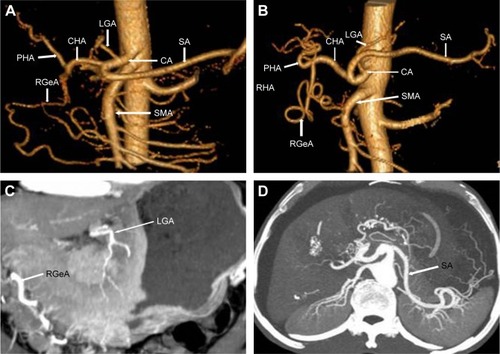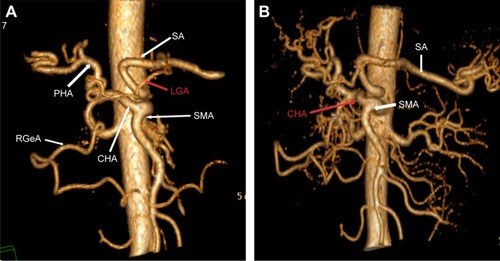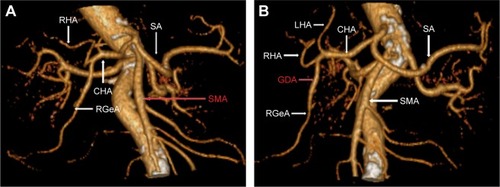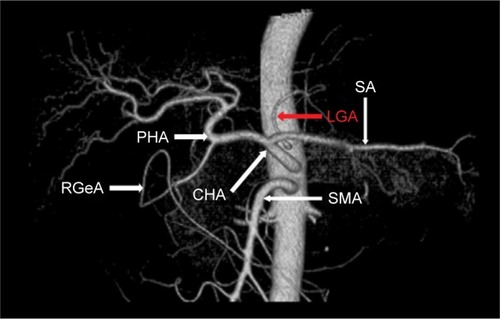Figures & data
Table 1 Comparison between VR and MIP for reconstruction of perigastric arteries (case)
Figure 1 VR and MIP reconstruction techniques for perigastric arteries.
Abbreviations: CA, celiac axis; CHA, common hepatic artery; LGA, left gastric artery; SA, splenic artery; PHA, proper hepatic artery; SMA, superior mesenteric artery; RGeA, right gastroepiploic artery; RHA, right hepatic artery; RGeA, right gastroepiploic artery; VR, volume rendering; MIP, maximum intensity projection.

Table 2 Comparison for perigastric arterial types by angiography (%)
Figure 2 Three-dimensional reconstruction of gastric vessel anatomy and rare variations.
Abbreviations: CHA, common hepatic artery; SA, splenic artery; LGA, left gastric artery; RGeA, right gatroepiploic artery; SMA, superior mesenteric artery; PHA, proper hepatic artery.

Figure 3 Right hepatic artery deriving from GDA.
Abbreviations: CHA, common hepatic artery; SA, splenic artery; RHA, right hepatic artery; SMA, superior mesenteric artery; RGeA, right gastroepiploic artery; GDA, gastroduodenal artery; LHA, left hepatic artery.

Figure 4 LGA originating from aorta.
Abbreviations: CHA, common hepatic artery; SA, splenic artery; SMA, superior mesenteric artery; RGeA, right gastroepiploic artery; PHA, proper hepatic artery; LGA, left gastric artery.

Table 3 Comparison of arterial variations between our group and Hiatt’s (case)
